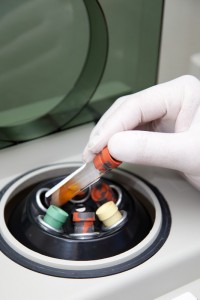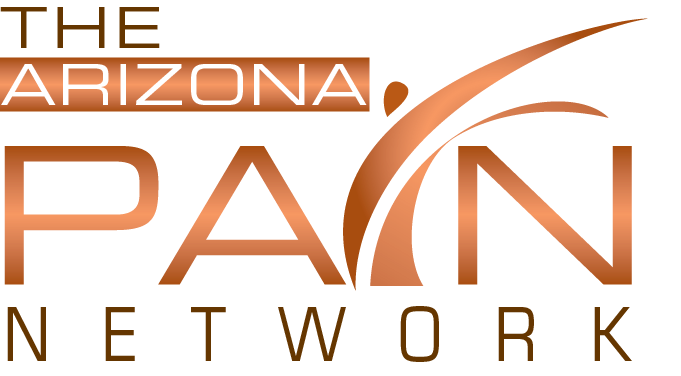Regenerative Medicine with Platelet Rich Plasma (PRP) Injection Therapy
One of the latest and most exciting advancements in regenerative medicine is platelet rich plasma injections, known as PRP. These injections are very exciting, as they use the body’s own growth factors and stem cells to help with regenerating tissue rather than simply masking symptoms for pain relief.
History
The treatment has been used for years by other specialties outside of pain management such as dentistry, cardiothoracic surgery, urology and ophthalmology. Over the past few years, its applicability for musculoskeletal injury treatment has soared.
What Exactly is PRP?
PRP is defined as “a volume of plasma that has a platelet count above the baseline of whole blood.” Plasma represents slightly over half of the total blood volume. It is a clear, straw-colored liquid, over 90% water, and contains proteins, hormones, minerals, immunoglobulins, and clotting factors like platelets.
PRP involves using the patient’s own blood by simply taking it from an arm vein. This is  just like a typical blood draw for lab work. The blood is then placed in a centrifuge machine which spins it around very fast and separates the plasma from the rest of the whole blood. The plasma is what contains the platelets along with a significant amount of growth factors that can help regenerate damaged tissue.
just like a typical blood draw for lab work. The blood is then placed in a centrifuge machine which spins it around very fast and separates the plasma from the rest of the whole blood. The plasma is what contains the platelets along with a significant amount of growth factors that can help regenerate damaged tissue.
Along with the ability to facilitate tissue repair, these growth factors are crucial for calling in stem cells from a persons body to help regenerate damaged tissue. This is why platelet rich plasma treatment is often called stem  cell treatment because it acts as a great signal to bring in those cells from a person’s own body, which can then differentiate into either cartilage, tendon, or ligament cells.
cell treatment because it acts as a great signal to bring in those cells from a person’s own body, which can then differentiate into either cartilage, tendon, or ligament cells.
What Are the Indications for PRP?
The most common indications so far for platelet rich plasma treatment include tendinitis in the elbow such as lateral epicondylitis or medial epicondylitis. These are known as tennis elbow and golfer’s elbow. Initial studies have shown excellent pain relief from PRP injections into the painful areas.
Additional PRP treatments are being performed for tendonitis of the achilles, shoulder, elbow, knee along with plantar fasciitis, bursitis, knee ligament injuries, wound healing and much more (Sampson et al 2008).
Ligament injuries are benefitting as well from PRP such as the collateral ligaments of the knee. Tendons have a very poor blood supply and when damaged, are able to benefit from the growth factors and additional stem cells that are called in by the PRP injections.
Along with these soft tissue injury indications, PRP injections are also being used inside various joints such as the knee, the hip the ankle, and the shoulder itself for inflammatory osteoarthritis.
Call (602) 507 – 6550 to schedule your Appointment TODAY!

How is the Procedure Performed?
Platelet Rich Plasma Therapy treatment is performed as an outpatient. Initially 30-60 cc’s of blood is obtained and placed in a centrifuge and spun into three layers in a process called blood fractionation.
called blood fractionation.
The top includes the plasma and platelets, while the bottom contains red blood cells as the heaviest component. The middle layer consists of a “buffy coat”, including white blood cells and some platelets. The top layer is separated and then spun again in the centrifuge. The result is a final product containing 3 to 6 cc’s of platelet rich plasma (usually the end result contains more than four times blood concentration).
Once the PRP solution is ready, the area of injection is prepared sterile and numbing medicine is used for comfort. The pain doctor typically uses fluoroscopy or ultrasound to ensure injection accuracy.
How Well Does PRP Work?
Although there have been thousands of studies looking at the effects of PRP, it is still somewhat controversial. The three major sports leagues in America—Major League Baseball, the National Football League (NFL), and the National Basketball Association (NBA)—along with the World Anti-Doping Agency, have decided that platelet rich plasma is a reasonable treatment. This is despite the fact that limited efficacy exists.
PRP introduces growth factors that can help tissue heal, as opposed to most pain treatments that simply mask pain as a proverbial “band aid.” Pain improvements are  generally seen within a few weeks, and is often more gradual than steroid treatments since the tissue is slowly healing (Sampson et al 2008).
generally seen within a few weeks, and is often more gradual than steroid treatments since the tissue is slowly healing (Sampson et al 2008).
A review of Platelet Rich Plasma therapy for knee arthritis was recently published by the Hospital for Special Surgery and is discussed HERE on our blog.
PRP injections are often combined with a physical therapy program, as the treatment can help facilitate new tissue growth as well (Barkdull et al 2010).
An additional study out of South Florida showed that PRP treatment works very well for medial and lateral epicondylitis (golfer’s and tennis elbow). That study is discussed HERE on our blog.
Is PRP Covered by Insurance?
Currently, PRP injections are not reimbursable by insurance. Therefore, it is being offered as a fee for service treatment with excellent results being obtained so far at Arizona Pain.
What are the Risks of Treatment?
The risks of platelet rich plasma treatments are very low. The blood utilized with the procedure comes from the patient’s own body, so the risk of rejection is nonexistent.
There is a very small risk of an allergic reaction from numbing medicine used in the procedure. There’s also a very low risk of infection since the blood is being removed from the body, processed and reinjected.
Another expected very small risk of PRP is initial pain for the first 48 to 72 hours from the procedure. This is a result of the growth factors and inflammatory mediators in the PRP beginning to work, and this often leads to some aching in the treatment region for the first 2 to 3 days. Then the benefits start to kick in and pain relief is usually experienced.
Treatment with platelet rich plasma for tendon injury, inflammatory conditions, bursitis, ligament injury and arthritis is very exciting and is on the cutting edge of regenerative medicine. If you would like to find out more about PRP procedures and how it can benefit your pain condition then Call (602) 507 – 6550 to schedule your Appointment TODAY!

![]()


 just like a typical blood draw for lab work. The blood is then placed in a centrifuge machine which spins it around very fast and separates the plasma from the rest of the whole blood. The plasma is what contains the platelets along with a significant amount of growth factors that can help regenerate damaged tissue.
just like a typical blood draw for lab work. The blood is then placed in a centrifuge machine which spins it around very fast and separates the plasma from the rest of the whole blood. The plasma is what contains the platelets along with a significant amount of growth factors that can help regenerate damaged tissue. cell treatment because it acts as a great signal to bring in those cells from a person’s own body, which can then differentiate into either cartilage, tendon, or ligament cells.
cell treatment because it acts as a great signal to bring in those cells from a person’s own body, which can then differentiate into either cartilage, tendon, or ligament cells. called blood fractionation.
called blood fractionation. generally seen within a few weeks, and is often more gradual than steroid treatments since the tissue is slowly healing (Sampson et al 2008).
generally seen within a few weeks, and is often more gradual than steroid treatments since the tissue is slowly healing (Sampson et al 2008).